TL;DR
Day trading and swing trading are two distinct approaches to trading in financial markets. Day trading involves making quick decisions and profiting from short-term price fluctuations within a single trading day. It requires analytical skills, emotional control, and the ability to act swiftly. Advanced strategies for day trading include scalping, breakout trading, momentum trading, and news trading.
Swing trading, on the other hand, focuses on capturing longer-term trends and riding price swings that typically take several days to weeks to unfold. It requires patience, an understanding of technical analysis, and the ability to detach from daily market fluctuations. Advanced strategies for swing trading include trend following, Fibonacci retracement, volume analysis, and incorporating fundamental analysis.
The choice between day trading and swing trading depends on your personality, goals, and time commitment. Day trading suits individuals who thrive in high-pressure environments, while swing trading is for those who have a more patient and relaxed demeanor. Day trading requires more time and focus, while swing trading offers flexibility. Continuous learning and adaptability are crucial for success in both approaches.
Introduction
Trading in financial markets has always been an intriguing endeavor. The promise of lucrative gains, the rush of making quick decisions, and the thrill of navigating the volatile waters of the market have attracted individuals from all walks of life. As a professional writer and knowledgeable crypto trader, I have had the privilege of immersing myself in this world, experiencing the highs and lows firsthand. In this article, we will explore the art and science of trading, delving into the differences between day trading and swing trading, and help you uncover which approach might be the right fit for you.
Understanding Day Trading
Imagine a scenario where you wake up early, your senses sharpened, ready to tackle the market head-on. This is the world of day trading, where traders aim to profit from short-term price fluctuations within a single trading day. It’s a fast-paced, adrenaline-fueled battlefield where split-second decisions can make or break your success.
The Day Trader’s Battlefield
In the world of day trading, every moment counts. Traders closely monitor charts, looking for patterns and indicators that suggest a potential move. It’s a constant battle between bulls and bears, where emotions run high and the stakes are sky-high. Every trade is executed with precision, as the window of opportunity can vanish as quickly as it appeared.
Let me share a personal story to illustrate the intensity of day trading. On a particularly volatile day, I found myself tracking the price of a popular cryptocurrency. The market was in a frenzy, swinging wildly from one extreme to the other. I spotted what appeared to be a breakout pattern, and without hesitation, I entered a trade.
As the minutes ticked by, the price started to move in my favor, and the adrenaline coursing through my veins was palpable. However, just as I was about to celebrate, news broke of a regulatory crackdown in a major market. Panic ensued, and the price plummeted within seconds. In the blink of an eye, my potential profits turned into a loss. Such is the nature of day trading—a thrilling rollercoaster ride that demands constant vigilance.
Skills and Mindset of a Day Trader
To excel in day trading, one must possess a unique set of skills and cultivate a specific mindset. The ability to make quick decisions based on limited information is crucial. It requires a deep understanding of technical analysis, the skill to interpret complex charts and indicators, and the discipline to stick to predefined entry and exit points.
Moreover, day traders must possess unwavering emotional control. It’s easy to get caught up in the frenzy, succumbing to fear or greed. But successful day traders have mastered the art of maintaining a cool head amidst chaos. They understand that losses are inevitable, and it’s the overall profitability that matters in the long run.
Advanced Strategies for Day Trading
Now, let’s dive into some advanced strategies that day traders employ to increase their chances of success in this fast-paced environment.
- Scalping: This strategy involves making small, quick trades to capitalize on short-term price movements. Scalpers aim to capture small profits multiple times throughout the day, relying on tight stop-loss orders to limit losses. It requires quick reflexes, keen observation skills, and the ability to act swiftly.
- Breakout Trading: Day traders often look for breakout patterns, where prices surpass a predefined resistance level or support level. This strategy involves entering a trade as soon as the breakout occurs, with the expectation that the price will continue to move in the same direction. It requires careful analysis of chart patterns, volume, and market sentiment.
- Momentum Trading: Momentum traders capitalize on the strength and speed of price movements. They look for stocks or cryptocurrencies that are experiencing significant upward or downward momentum, and they join the trend, riding the wave until signs of exhaustion appear. Momentum trading requires vigilance and the ability to spot potential reversals.
- News Trading: Day traders who specialize in news trading closely monitor economic announcements, corporate earnings reports, and other market-moving news events. They aim to capitalize on the volatility caused by these events, quickly entering and exiting trades based on the news’s impact. News trading requires speed, access to real-time information, and the ability to interpret news releases effectively.
Each of these strategies has its own intricacies and risks. It’s essential to thoroughly understand them, practice them in a simulated trading environment, and gradually implement them with small position sizes before risking significant capital.
Swing Trading: Riding the Waves
While day trading provides the excitement of instant gratification, swing trading offers a different approach. As a swing trader, you’re more patient, waiting for longer-term trends to play out. You aim to capture the “swings” in price, which typically take several days to weeks to unfold.
The Art of Riding the Waves
Imagine yourself as a surfer, waiting patiently on your board for the perfect wave. This analogy holds true for swing traders who meticulously study the market, identifying trends that have the potential for significant price movements. They enter positions and ride the wave until it reaches its peak, extracting profits along the way.
Let me share an anecdote that perfectly encapsulates the essence of swing trading. It was during a prolonged bear market when a particular cryptocurrency caught my attention. The price had been steadily declining for months, and sentiment was at an all-time low. However, my analysis revealed a potential reversal pattern forming.
With a contrarian mindset, I entered a swing trade, fully aware of the risks involved. Days turned into weeks as the price gradually started to climb. I patiently held onto my position, resisting the temptation to exit prematurely. Finally, the market sentiment shifted, and the price soared, exceeding my initial expectations. The wave had reached its peak, and I gracefully rode it to the shore, locking in substantial gains.
Skills and Mindset of a Swing Trader
Swing trading requires a different skill set compared to day trading. While technical analysis is still vital, the focus shifts toward identifying longer-term trends and developing a keen sense of market sentiment. Patience becomes a virtue as swing traders often hold positions for extended periods, weathering temporary downturns in anticipation of substantial gains.
Furthermore, swing traders must possess the ability to let go of emotions and detach themselves from daily market fluctuations. This mindset allows them to make rational decisions based on a broader perspective. Discipline and the ability to stick to a predetermined trading plan are paramount, preventing impulsive moves that could erode potential profits.
Advanced Strategies for Swing Trading
Let’s explore some advanced strategies that swing traders employ to enhance their success in capturing and riding longer-term trends.
- Trend Following: Swing traders often rely on trend-following strategies, where they identify established trends and ride them until signs of exhaustion appear. This involves using technical indicators such as moving averages, trendlines, and price patterns to confirm the direction of the trend. Trend following requires patience and the ability to tolerate temporary pullbacks.
- Fibonacci Retracement: Swing traders frequently use Fibonacci retracement levels to identify potential areas of support and resistance within a larger trend. These levels are based on mathematical ratios derived from the Fibonacci sequence. By entering trades near these levels, swing traders aim to capitalize on price reversals or continuations.
- Volume Analysis: Analyzing volume can provide valuable insights for swing traders. Increasing volume during price advances suggests strength and conviction, while decreasing volume during price declines may indicate weakness. Volume analysis helps swing traders confirm the validity of trends and identify potential trend reversals.
- Fundamental Analysis: While swing trading is primarily based on technical analysis, incorporating fundamental analysis can provide an added edge. Swing traders analyze factors such as earnings reports, market trends, news events, and industry-specific developments to identify stocks or cryptocurrencies with strong growth potential. Combining fundamental and technical analysis helps swing traders make more informed trading decisions.
It’s important to note that swing trading requires diligent monitoring of positions, as trends can change or lose momentum. Setting trailing stop-loss orders and regularly reviewing the progress of trades is crucial to manage risk effectively.
Choosing the Right Path for You
Now that we’ve explored the worlds of day trading and swing trading, how do you determine which approach is right for you? The answer lies in your own personality, goals, and available time commitment. Allow me to provide some guidance to help you make an informed decision.
Consider Your Personality
Day trading is suited for individuals who thrive in high-pressure environments, possess strong analytical skills, and can make split-second decisions with confidence. If you enjoy the adrenaline rush and have a penchant for quick thinking, day trading might be your calling.
On the other hand, swing trading is better suited for those who have a more patient and relaxed demeanor. If you can withstand the ups and downs of the market without succumbing to impulsive actions, swing trading provides a strategic and measured approach to trading.
Evaluate Your Goals
Your trading goals also play a significant role in choosing the right path. If your aim is to generate quick profits and take advantage of short-term price movements, day trading aligns with your objectives. However, if you’re looking to capture larger market swings and are willing to wait for potential high returns, swing trading may be more suitable.
Consider Time Commitment
Day trading demands a considerable amount of time and focus. It requires you to be actively engaged in the market during trading hours, analyzing charts, and executing trades. If you have a full-time job or other commitments that limit your availability, swing trading offers a more flexible approach, allowing you to monitor the market at your own pace.
Continued Learning and Adaptability
Regardless of whether you choose day trading or swing trading, continuous learning and adaptability are essential for long-term success. The financial markets are dynamic and ever-evolving, requiring traders to stay informed about new strategies, technologies, and market trends.
Engage in self-reflection, assess your strengths and weaknesses, and continuously work on improving your trading skills. Utilize educational resources, attend webinars, read books, and seek out mentors who can provide guidance based on their experiences.
Conclusion
In the world of trading, both day trading and swing trading offer unique opportunities and challenges. Day trading provides the thrill of fast-paced action, where split-second decisions can lead to instant gains or losses. Swing trading, on the other hand, offers a more patient and strategic approach, aiming to capture longer-term trends for substantial profits.
Ultimately, the choice between day trading and swing trading depends on your personality, goals, and time commitment. Assess your strengths, evaluate your objectives, and carefully consider the time you can dedicate to trading. Remember, both approaches require dedication, discipline, and continuous learning.
As you embark on your trading journey, always remember that no path guarantees success. It is through experience, perseverance, and adaptability that traders evolve and thrive. Whether you choose to be a day trader or a swing trader, embrace the challenges, learn from your mistakes, and let your passion for trading guide you towards your financial goals.

















